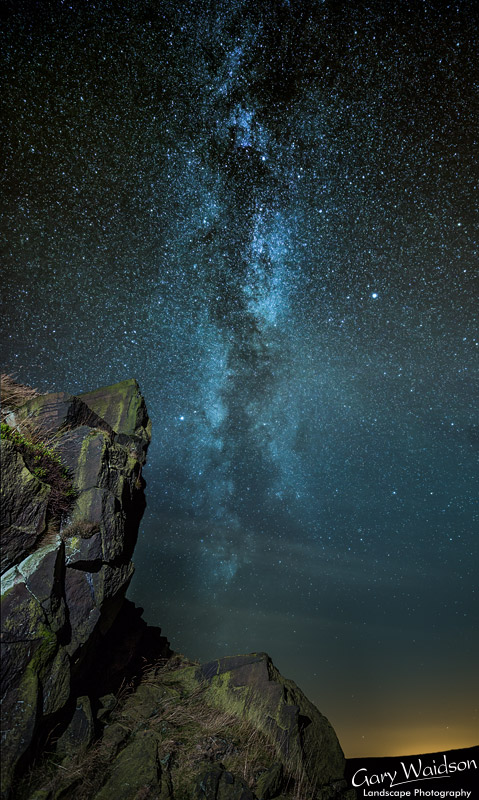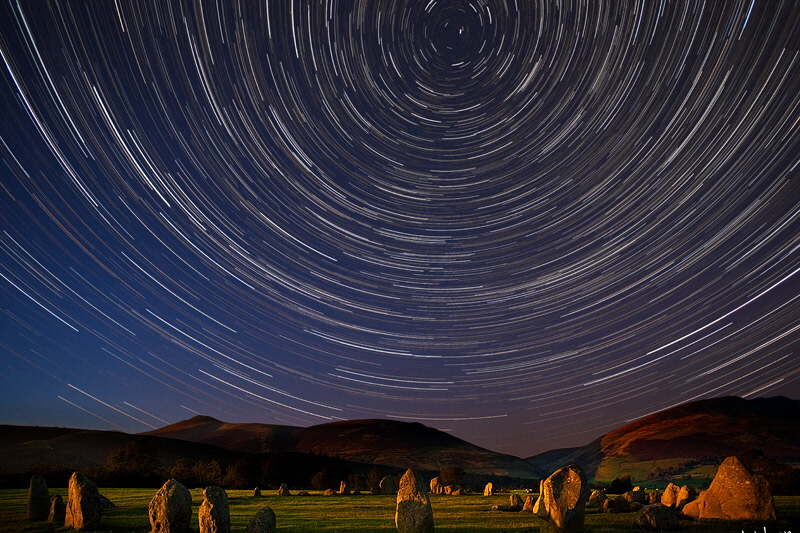After about an hour in the darkness I could certainly see the galactic plane clearly but not the finer details that the camera sensor has recorded.
I was limited to a 25 second exposure because I was using a fixed tripod head. That meant I had to push the gain up to 6400iso which left me fighting sensor noise a bit.

Recently I experimented with a simple equatorial mount which allowed me to use a much longer exposure on the cameras native iso setting, resulting in far less noise, although this was just a few miles from home so the light pollution was lousy.
I had to desaturate the lower half to get anything useful but that has killed the delicate colour of the core as well. I'm certainly looking forward to trying this new mount in a darker location though.
Seeing stuff like this is why I'm so cranky about strong lighting around camps though. You might just as well stay in your living room in front of the telly if you are going to blind yourself and others with super bright gas lanterns or head lamps.
The night sky is a real treasure that some people never appreciate because they don't give themselves the opportunity to actually see it.
I was limited to a 25 second exposure because I was using a fixed tripod head. That meant I had to push the gain up to 6400iso which left me fighting sensor noise a bit.

Recently I experimented with a simple equatorial mount which allowed me to use a much longer exposure on the cameras native iso setting, resulting in far less noise, although this was just a few miles from home so the light pollution was lousy.
I had to desaturate the lower half to get anything useful but that has killed the delicate colour of the core as well. I'm certainly looking forward to trying this new mount in a darker location though.
Seeing stuff like this is why I'm so cranky about strong lighting around camps though. You might just as well stay in your living room in front of the telly if you are going to blind yourself and others with super bright gas lanterns or head lamps.
The night sky is a real treasure that some people never appreciate because they don't give themselves the opportunity to actually see it.


